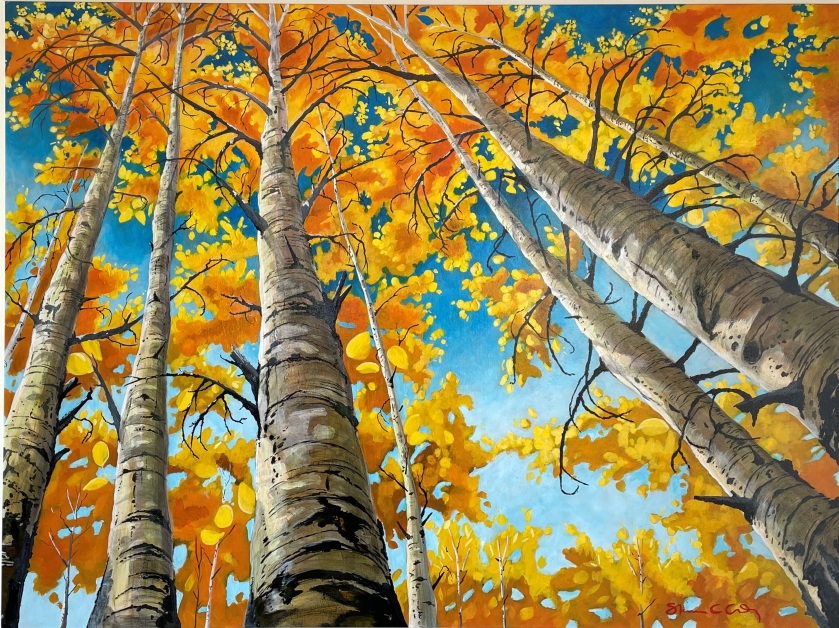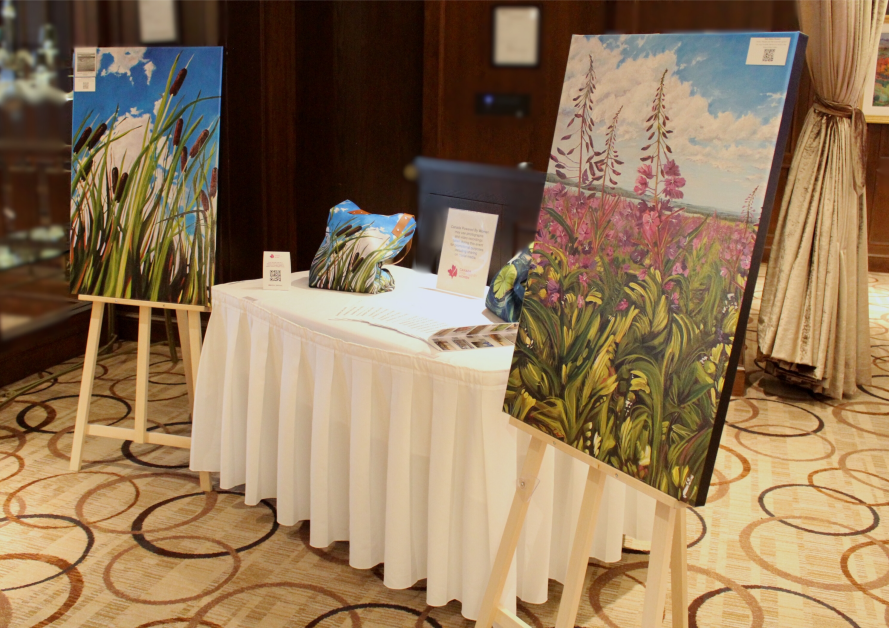If you’ve ever visited the Butchart Gardens, a brilliant garden oasis in Victoria, B.C., you’ve likely been awed by the beauty of the lush landscape there.
Did you know it was once a limestone quarry?
Same goes for Cape Breton’s Cabot Links in Nova Scotia — a scenic golf course built atop a reclaimed coal mine — and Alberta’s Quarry Lake, a picturesque swimming and sightseeing area in Canmore, which used to be an open-pit coal mine.
Countless beautiful destinations across our country stand as a testament to Canada’s quiet commitment to reclamation, where the primary goal is to return land used for oil sands or mining back to its original, natural state.
Conversations about reclamation and preservation efforts in Canada don’t have to be all statistics and spreadsheets. One Canadian artist is changing the narrative with her commitment to education through art.
“I have made it my primary practice to paint the raw, natural beauty of reclamation, preservation and conservation success stories,” says Shannon Carla King, an artist from Alberta with a professional background in the oil and gas industry.
“I can play a unique role by using art to show the good work that’s being done that is not being spoken about,” she says. “My audiences vary, from energy industry professionals to art enthusiasts to the general public from all across Canada. Through art, I depict reclamation work that is often complex and technically oriented, traditionally represented with spreadsheets and charts, and highlight the beauty of it.

Aspiring Aspens, inspired by the golden colours of the Alberta Aspen trees in the fall. Photo courtesy of Shannon Carla King
“I can entice people by showing a scene or landscape where they don’t have to know anything about reclamation or scientific processes to appreciate it. I’m able to capture their attention and then gradually explain to them what the scene is about.”
Many of King’s paintings showcase reclaimed sites from the energy sector, including oil sands production, coal mines, gravel pits, landfills and other construction reclamation.
Her collection, The ART of Reclamation, features work such as Pretty in Pink, inspired by the Twin Sisters Native Plants Nursery in Moberly Lake, B.C. The purpose of the nursery is to propagate and distribute native plant species for ecological restoration and remediation of mining and other industrial projects while incorporating First Nations values and beliefs.
Pretty in Pink was on display at the Canada Powered by Women Signature Event™ on June 18, alongside another painting, What the Frogs Saw.

The Shannon Carla King exhibit on display at the Canada Powered by Women Signature Event™ on June 18, 2024.
Through her work, King facilitates important conversations and critical thinking based on what we can see and feel when we connect with nature.
“It’s the same goal we have — to start bold conversations around energy, prosperity and the environment, supported with education, and then listen to what engaged women care about,” says Jenn Lomas, national marketing director for Canada Powered by Women.
Two sides of the same coin, with the same goal in mind: balance.
Artwork inspires critical thinking by encouraging viewers to interpret and analyze complex visual elements, leading to diverse perspectives and deeper understanding. It challenges assumptions and provokes questions, fostering a reflective and inquisitive mindset.
“This conversation is important, and artwork is a common ground through which conversation can happen when someone learns what the site looked like before it was reclaimed,” says Lomas.
What if we could have the same dialogue about energy and the environment — without the politics?
Canada Powered by Women leads with this approach at our events, where we create safe spaces for women to talk, ask questions and share bold insights.

Pumpjack Powerplants, Inspired by Canadian Control Works, a small Edmonton based company with a big idea. Photo courtesy of Shannon Carla King
That’s what we know engaged women want based on our research.
“Using data, CPW is disrupting the status quo by showing that women have opinions about energy,” says King. “I believe that the way women think and the way they see the world differently is helpful to looking at the bigger picture and looking at closing the gap.”
To achieve the balanced approach to economic prosperity, energy security and environmental health engaged women across Canada are seeking, the conversation must continue — through data, dialogue, collaboration, art and more.
To view the insights from our spring 2024 national research, click here.
To learn more about Shannon Carla King and her work as a Canadian reclamation, preservation and conservation artist, click here.
